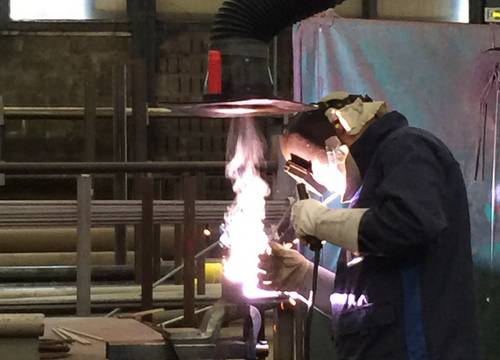
Dwight Barnett, Evansville Courier & Press, P.O. Either one would save energy and prevent back-drafting of flue gases. If the problems persist, I would recommend you install a sealed combustion water heater, or a high-efficiency power-ventilated water heater. The pipe should extend up or down to be near the burners on the water heater. The air exhaust part includes air return section, initial effect filtering section and the exhaust blower section set gradually from return air inlet to exhaust outlet. Whichever you choose, the pipe should be covered with a screen to prevent pest entry. a kind of runner recuperation of heat unit, including superposed air exhaust part and positioned at the fresh air part of lower part, feature exists In.

In extreme cases, it might be necessary to bring in an outside fresh-air supply for the home's combustion appliances, from either the crawlspace or the attic. While the blower-door fan is running, a trained energy auditor will check areas of the home that do not have sufficient air returns to supply the furnace fan. If the open-door policy doesn't work, the problem areas can be found by using a blower door test to simulate the negative pressures inside the home. The moderate amount of exhaust that comes back up around the base of the rocket surely pales in comparison to the amount produced by the remaining four F-1s, and the significant gas flow of those would probably easily entrain the exhaust that remains up around the base of the rocket.A simple solution is to keep the door to the furnace room open or add a louvered door to provide make-up air to the fan system. The above video does explain the macro-level sequence of engine ignition (around 6:00) the middle engine ignites, then a 200-ms delay before another opposing pair, then another 200-ms delay before the final pair. I think the explanation of entrainment makes more sense after reading it above (thanks, Organic Marble), as the LOx dump occurs long enough before the first engine ignition to make it an unlikely cause of the drawing in of the first exhaust plume.

The dumped LOx starts to vaporize as it depressurizes to the atmosphere, and I figured that because it is significantly cooling the air around it, it might produce a brief and local but potentially appreciable vacuum under the launch pad, which might be enough to "suck in" exhaust gas momentarily. This is explained starting at about 3:00 (though starting at 2:40 or so sets the stage better).


Although many vent hoods exhaust air to the outside, some. I had previously wondered about this vacuum-type phenomenon as well, after seeing this video, supposing for a few days that it was due to the brief "dump" of LOx through the engine (and out through the bell) that occurred when the main LOx valves opened. In most exhaust hoods, a filtration system removes grease (the grease trap) and other particles. This video has some fascinating explanation and commentary on the ignition sequence of an F-1 (Saturn V main engine).


 0 kommentar(er)
0 kommentar(er)
